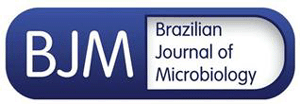Resumo em Inglês:
Microbial degradation of 1,1,1-trichloro-2,2-bis(p-chlorophenyl)ethane (DDT) is the most promising way to clean up DDT residues found in the environment. In this paper, a bacterium designated as wax, which was capable of co-metabolizing DDT with other carbon sources, was isolated from a long-term DDT-contaminated soil sample by an enrichment culture technique. The new isolate was identified as a member of the Pseudoxanthomonas sp., based on its morphological, physiological and biochemical properties, as well as by 16S rRNA gene analysis. In the presence of 100 mg l-1 glucose, the wax strain could degrade over 95% of the total DDT, at a concentration of 20 mg l-1, in 72 hours, and could degrade over 60% of the total DDT, at a concentration of 100 mg l-1, in 144 hours. The wax strain had the highest degradation efficiency among all of the documented DDT-degrading bacteria. The wax strain could efficiently degrade DDT at temperatures ranging from 20 to 37ºC, and with initial pH values ranging from 7 to 9. The bacterium could also simultaneously co-metabolize 1,1-dichloro-2,2-bis(p-chlorophenyl)ethane (DDD), 2,2-bis(p-chlorophenyl)-1,1-dichlorethylene (DDE), and other organochlorine compounds. The wax strain could also completely remove 20 mg kg-1 of DDT from both sterile and non-sterile soils in 20 days. This study demonstrates the significant potential use of Pseudoxanthomonas sp. wax for the bioremediation of DDT in the environment.
